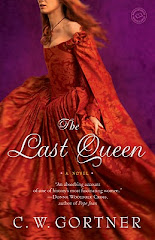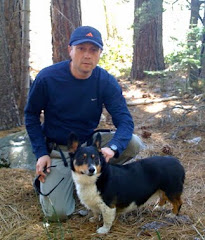 HED, which tells the story of Charlotte Gold and Jack Harrington, two fiercely independent attorneys who find themselves slowly falling for one another while working to defend the brother of a Holocaust hero against allegations of World War II–era war crimes. Pam has garnered international acclaim for her first novel The Kommandant's Girl, as well as its sequel The Diplomat's Wife. In her guest post, Pam offers us an intriguing look at historical accuracy and a glimpse into the struggles that many of us who write historical fiction face. Please join me in welcoming Pam Jenoff.
HED, which tells the story of Charlotte Gold and Jack Harrington, two fiercely independent attorneys who find themselves slowly falling for one another while working to defend the brother of a Holocaust hero against allegations of World War II–era war crimes. Pam has garnered international acclaim for her first novel The Kommandant's Girl, as well as its sequel The Diplomat's Wife. In her guest post, Pam offers us an intriguing look at historical accuracy and a glimpse into the struggles that many of us who write historical fiction face. Please join me in welcoming Pam Jenoff.Historical Fiction: How Real? How True?
by Pam Jenoff
I grew up an avid reader of historical fiction, devouring stories as far away as medieval England and as near as the 20th century. Yet I cannot recall asking myself the top questions my readers now seem to want to know: how much of the story is true? How accurate is it?

I suppose on some level I too was asking those questions, at least subconsciously. I became excited each time a “real” historical figure entered the story and always loved traveling to a place where a story I’d read had been set. But it was not until becoming an author that I seriously considered the matter. How much history and how much fiction and how to combine the two? In some sense, the two go hand in hand – it is history that provides the setting and milieu, and historical events can serve as a powerful inspiration and catalyst for fictional characters. But they can also be in tension with one another – history can slow down a story and make the plot drag.
Readers have very strong views. For example, when my first novel, The Kommandant’s Girl, was released, I braced myself for the backlash that would inevitably come from writing about a Jewish woman (Emma) who becomes involved with a Nazi. To my surprise, no one seemed bothered by that. Instead, the readers took issue with my portrayal of various historical details: an Orthodox Jewish family would never have named their daughter Emma, one wrote. A secular Jew like Emma’s husband Jacob would not have worn a yarmulke, insisted another. There were others too, but you get the idea.
Nowhere is the passion for reality and accuracy more intense than with readers of novels set during World War II and the Holocaust. Everyone has his or her own world view of these events. Some readers think I’m too hard on the Poles and their role in the war and others say I’m too nice. One reader took issue with a Polish character commenting that the west had taken too long to join the war effort, although that was surely the point of view of a woman trapped in an occupied country. I have found editors to be similarly sensitive to historical detail – with my second novel, The Diplomat’s Wife, we spent much time debating whether a bus would have had doors in 1946 London and would it have cost a two pence or five pence to ride? Wrestling with the historical/fiction balance was particularly challenging in my latest novel, The Things We Cherished, because it jumps between a number of historical periods.
It is an issue that I continually wrestle with as a writer. Sometimes, I choose to stay accurate (keeping the geography of a city intact tends to be particularly important to me.) Other times the needs of plot and narrative thrust dictate that history be bent, such as reducing the approximately eighteen months between the German invasion and the creation of the Krakow ghetto to six weeks. (I felt better upon reading recently that the true story of the Von Trapp family was similarly cut from twelve years to a few months in The Sound of Music.)
I’m mixed about the intensity readers seem to place on “real life” details. I’m not saying that historical writers should not be diligent in their research with the goal of creating a realistic time and place. But this is fiction, not memoir. And I worry sometimes that it becomes a game of “gotcha” where readers, armed with the questionable accuracy of Wikipedia, try to spot mistakes in what is essentially supposed to be a fictional world. It can at times feel, well, a tad adversarial and perhaps take away from the author-reader connection. I wish that I could create a world and as long as my characters followed the rules of that world, I wouldn’t be held accountable to any external standard. I need a little latitude to make the story work (she whines). But then, I suppose, I should write fantasy, shouldn’t I?
Ultimately, though, I do think a degree of accuracy is important to create a believable story and keep the trust that is necessary between the author and reader. I’m glad that my readers are intelligent and pay attention and care as much as I do about the past.
Thank you, Pam. We wish you much success with your latest book. The Things We Cherished is published by Sphere in the UK on November 10 as a paperback original, £6.99. To learn more about Pam and her work, please visit her website.












2 comments:
Loved the guest post! I've read Jenoff's first two works and looking forward to The Things We Cherished. I also find it interesting how readers pick apart historical fiction. While I thought I was easy-going on the topic, I found myself with a few ruffled feathers when I read that WWI was referred to as WWI in a novel set in WWI. Back then, it was The Great War. (And yes, I made a comment to the author.) Her response was that it was decided that many readers wouldn't know that it was called The Great War, and thus its future title, WWI, was used. Lesson learned for author (and me): You can't please everyone!
Wow nice blog.....
Post a Comment